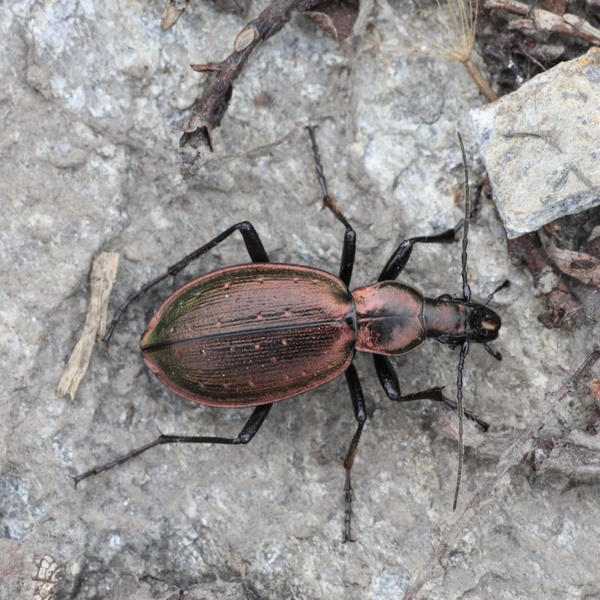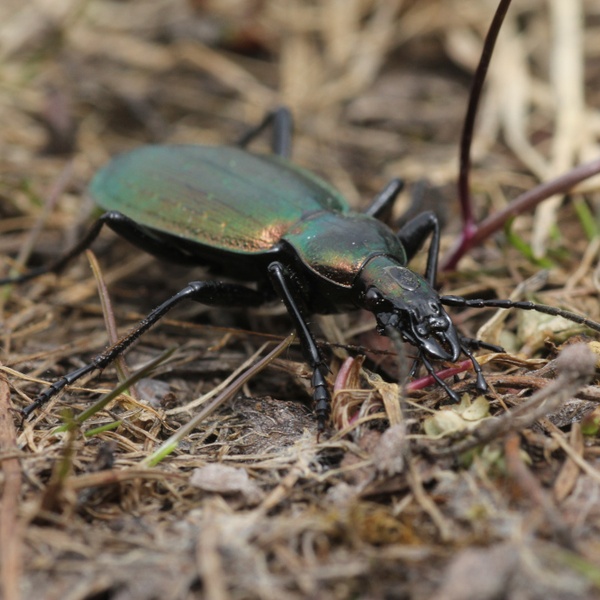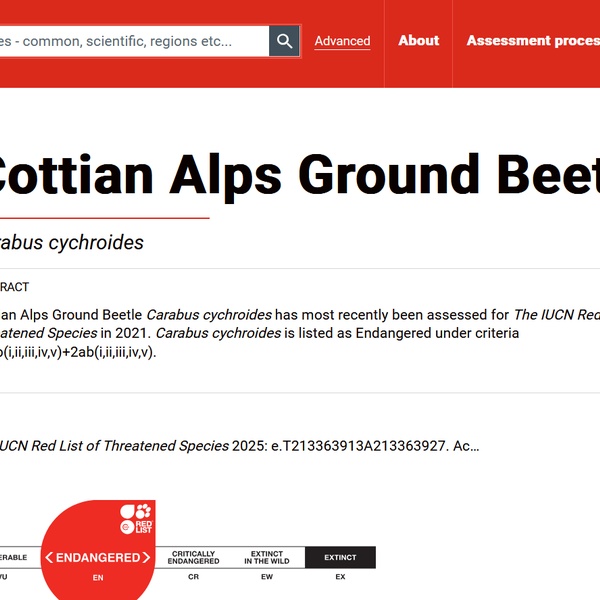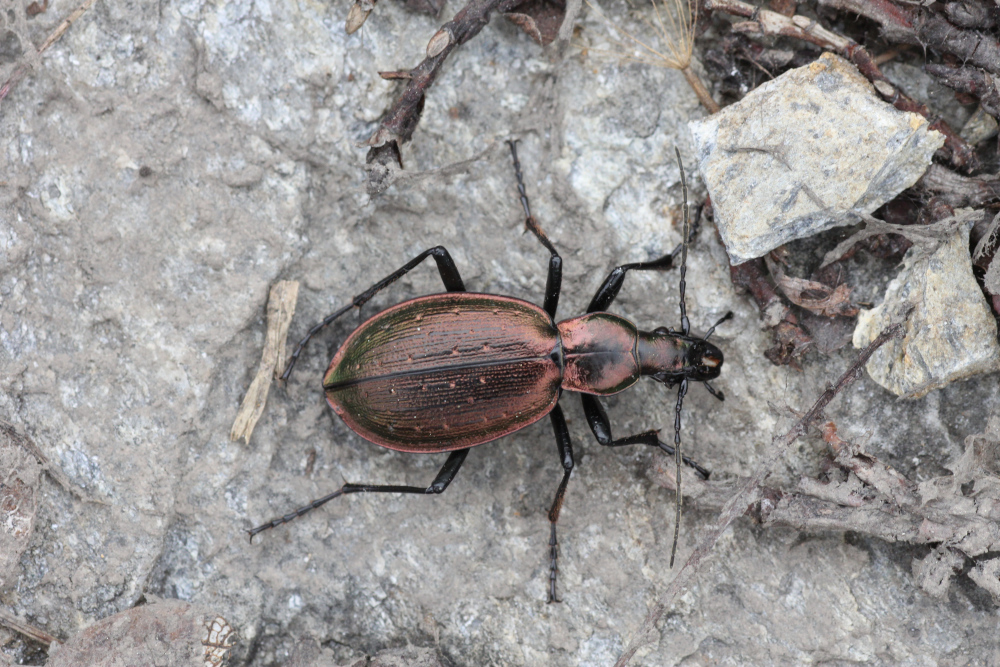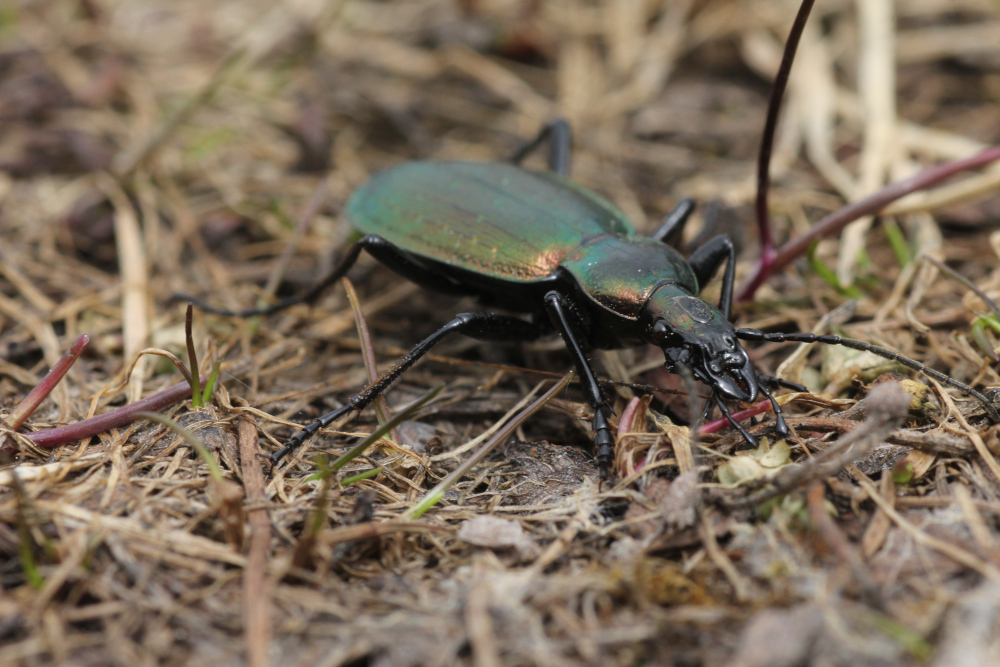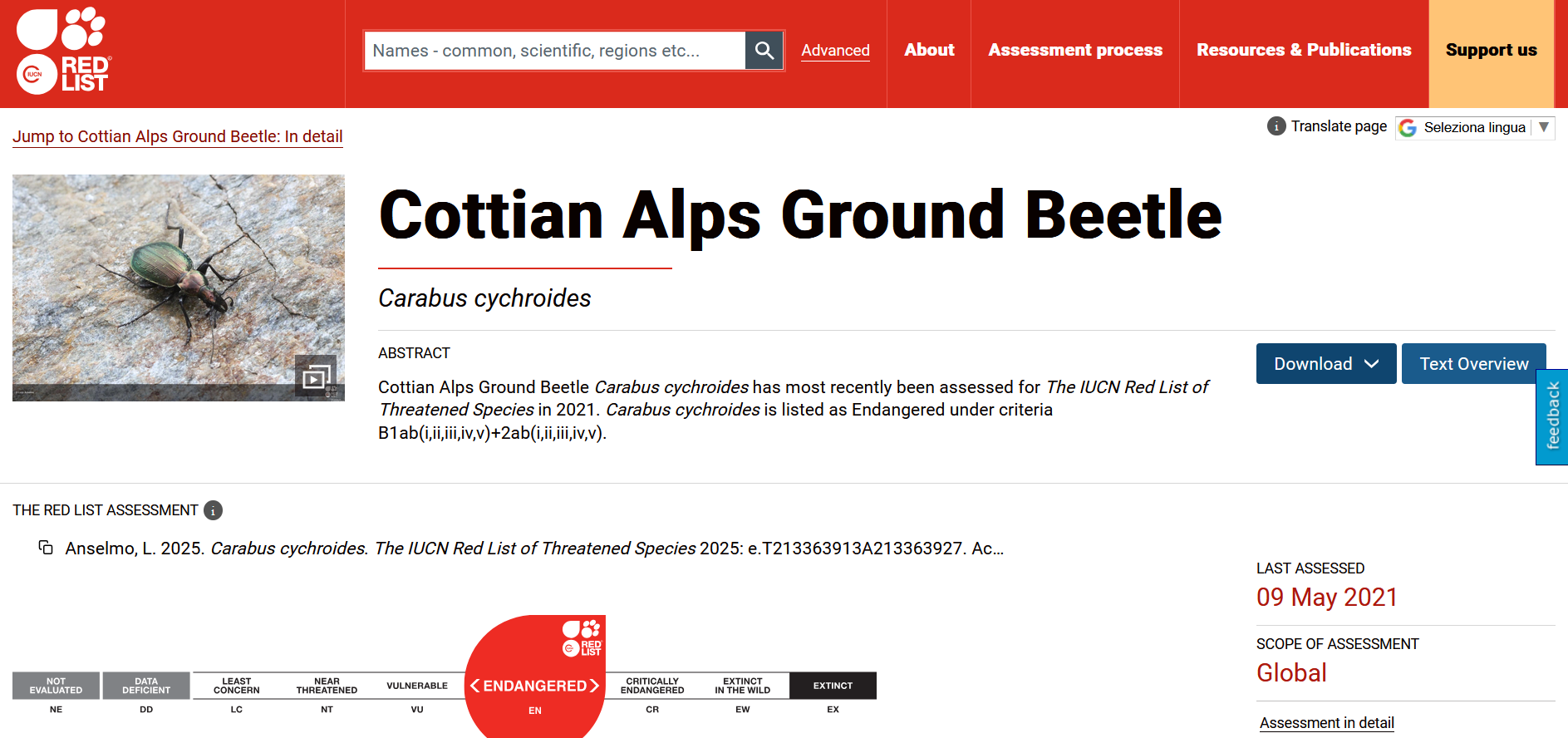The Alpine Carabid in the IUCN Red List
March 27, 2025On Thursday, March 27, 2025, the Cuchal del Alps (Carabus cychroides) was added to the Red List of threatened species of the International Union for Conservation of Nature (IUCN) in the Endangered category (risk of extinction). This is a prestigious international recognition for the endemic species of the Protected Areas of the Cozie Alps and at the same time a warning sign certifying its risk of disappearance.
To access the page on the Cuchal del Alps on the IUCN website, click here.
A Precious Insect
The Carabus cychroides is a species described in 1864 by the Piedmontese entomologist Flaminio Baudi di Selve. Its metallic green-bronze color with spotted elytra (the case that protects the wings) and elongated shape make it resemble a precious jewel, which is why it is highly valued among collectors. But its value, beyond aesthetics, is linked to its naturalist aspects: it is indeed a stenoendemic species, meaning it is present in an extremely restricted area, specifically some slopes of the Susa, Chisone, and Germanasca valleys characterized by cool high-altitude environments between 2100 and 2700 meters above sea level where it feeds exclusively on a prey, the snail Chilostoma glaciale. Overall, C. cychroides is found in an area of 250 km², of which 85% is included within the territories managed by the management body of the Cozie Alps Protected Areas, where it is under protection through specific managerial determination also in the Natura 2000 site ZSC-ZPS Val Troncea.
The Park Authority has also created a video about the species available by clicking here.
An Endangered Species
The recent inclusion of C. cychroides in the IUCN Red List is the merit of biologist and researcher at the University of Turin Luca Anselmo who, after rediscovering the species, conducted a series of in-depth research to identify its areas of presence, estimate its population, and evaluate its overall health status.
In particular, the researches conducted between 2020 and 2022 by Luca Anselmo with naturalist Barbara Rizzioli for the Cozie Alps Parks within the ALCOTRA Pitem Biodivalp project resulted in two scientific publications in the Journal of Insect Conservation (article available here) and in Nature Conservation Research (article available here). The studies reveal how climate change directly affects the preferred habitats of C. cychroides, reducing its range and rapidly worsening its conservation status. According to worst-case scenarios of increasing global average temperatures, the Cuchal del Alps could become extinct between 2050 and 2090.
The disappearance of species particularly adapted to specific microclimatic conditions, such as C. cychroides, is faster in mountainous areas where climate warming occurs at double speed compared to flatlands and where migration to higher and cooler altitudes becomes impossible for all those life forms that already occupy the mountain tops. To demonstrate this, the Cuchal del Alps has become elusive in many of the main historical observation stations as its distribution range has risen to higher altitudes.
What is the IUCN Red List
The International Union for Conservation of Nature (IUCN) was founded in 1948 at the prompting of UNESCO as a global authority on the protection and conservation of the world's ecological heritage. In addition to conducting scientific research, data collection and analysis, and education on environmental issues, in 1964 it created the Red List, or the red list of threatened species, which is an inventory of the conservation status and extinction risk of biological species present on our planet. Currently, the IUCN Red List includes more than 169,000 species, of which over 47,000 are threatened with extinction. Among these, 44% of reef-building corals, 41% of amphibians, 38% of trees, 37% of sharks and rays, 34% of conifers, 27% of mammals, 26% of freshwater fish, and 12% of birds.
The criteria for the inclusion of new species in the IUCN Red List involve a rigorous procedure, examining studies and data collected so that only a portion of living organisms has been evaluated so far. The Carabus cychroides is the third species of the Carabus genus to be evaluated, thanks to the efforts of Luca Anselmo and the studies funded by the Cozie Alps Parks that clarified its distribution and future scenarios.
The recognition by the IUCN is particularly significant for the Cuchal del Alps, which is not included in the annexes of the Habitat Directive of species of priority interest at the EU level. The hope is that its presence on the Red List can stimulate the adoption of further and more urgent conservation measures not only within the boundaries of Protected Areas.
For further insights, we refer to the Cozie Alps Parks website in the Parcopedia section, where there is a dedicated page for the Cuchal del Alps.
Press ReleaseYou might also be interested in...
- campaign Climate change is pushing birds higher.
- campaign The migrations of ibexes and climate change
- shopping_cart Boschi, Stato, comunità e fortificazioni. - Storie di gestione territoriale, usi, abusi e furberie nell'alta val Chisone dal XVII al XIX secolo.
- shopping_cart Dal fondovalle alle più alte rupi
- campaign The thyme of the Cozie Alps Parks on Geo
- campaign Val Troncea: divieto di attività alpinistica in area di pregio naturalistico
- campaign Redevelopment of the Fontana della Gerpula Trail - Amprimo Refuge
- campaign Drops of change in the Cozie Alps Parks
- campaign Monitorare gli ortotteri: una sperimentazione nei Parchi Alpi Cozie
- campaign Certosa di Montebenedetto: maintenance work completed
 Nature
Nature
